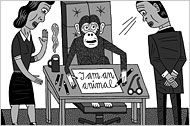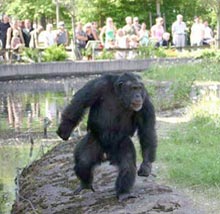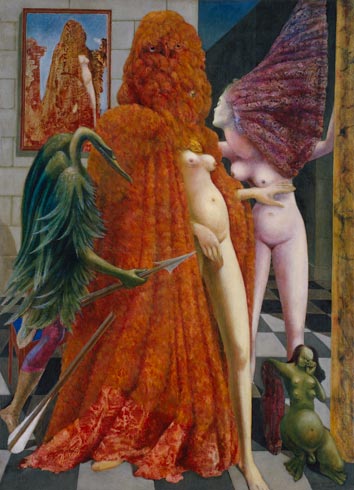Animal Inventory readers may be interested in two interviews I conducted for the Spring issue of Antennae: The Journal of Nature in Visual Culture. Read selections from these interviews below. Please visit Antennae to download the entire issue of the journal, along with the full length interviews.
My first interview is with Grant Morrison, the legendary graphic novel author, about his influential comic We3. Morrison is one of the most inventive and successful contemporary comic writers. He has won numerous comic awards, including the Eisner, the Harvey award, and the Eagle award, among others. He is the author of many original, groundbreaking works, including The Invisibles, Seven Soldiers, and many many others. He recently got worldwide attention when he killed off Batman in the comic, “Batman, RIP.” I interviewed Morrison on behalf of the journal Antennae, about his groundbreaking comic We3, which examines what could happen if animals were transformed into cyborg weapons by the U.S. government.
Selection from Grant Morrison interview:
Antennae: Early on the animals [in We3] endear themselves to the reader — even as they viciously kill humans and other animals. How did you manage to make them sympathetic, and why was this important in the larger context of your story?
Grant Morrison: They’re sympathetic because we all have a certain degree of empathy for the underdog – especially when it’s a literal underdog! We understand that they’ve suffered and we want to see them escape and survive because they deserve to. There’s a ‘Frankenstein’ or ‘King Kong’ element here and I think we all have a place in our hearts for the idea of the poor, misunderstood brute on the run from forces he barely understands.
At the same time, I didn’t want to sentimentalize the world of the animals any more than I had already, so it was important to portray them as real animals, capable of bloody violence when necessary. These are animals which have been brutalized to become weapons of war, so a big part of the story is about what happens when a product of scientific hubris goes wrong and turns against its creators. II described it as ‘Disney with fangs’.
Jessica Joslin is a three-dimensional artist whose sculptures are built from found objects, flea market finds, animal bones, antique jewelry, hardware, and other obscure artifacts. Joslin began creating her menagerie of creatures in 1992, and has birthed a collection of lovable, haunting ‘animals,’ who are as beautiful as they are strange. Her work has shown in galleries nationwide. I interviewed Joslin on behalf of the journal Antennae, about her collection.
Selection from Jessica Joslin interview:
Antennae: You have said that you think of your pieces as pets and friends. If these animals did exist, do you imagine this is the relationship they would have with humans (as opposed to food animals, wild animals, etc)?
Jessica Joslin: None would be food animals; they have no flesh. Many of them are performing animals, although some might be wild (at least occasionally) because they lack the signifiers of domesticity: collars, cuffs and caps. Although they are animals, I see them as something “other” because they are primarily mechanical constructions. They might give the illusion of life, but they are built of parts either dead or inanimate. In their current manifestation, their relationships with humans need not be as troubled as if they were flesh and blood animals. They cannot feel pain or fear. Those may have been present in their first life, but in my world, they are content. They enjoy doing tricks and wearing costumes. Their interactions with humans are infused with affection, whimsical humor and quirky charm. They make me want to protect them and keep them from harm; somehow, that feels appropriate. They have died once and been brought back out of love. I don’t always know what their first life may have been like, but this time around, I want them to be protected and appreciated.
To read the full length interviews, along with the entire issue of Antennae, click here.


 One of the challenges of writing with an agenda — that is, writing for the purpose of helping animals, or bringing greater awareness to animal issues — is that sometimes it seems as though lyricism and the beauty of words must be sacrificed. It can be difficult to imbue the language of public policy, welfare and rights, with the cadence of poetry. I started my career as a writer — not as an animal advocate, that came later — and so the weight of words matters to me. I am as much concerned with how I say something, as I am with what I am saying.
One of the challenges of writing with an agenda — that is, writing for the purpose of helping animals, or bringing greater awareness to animal issues — is that sometimes it seems as though lyricism and the beauty of words must be sacrificed. It can be difficult to imbue the language of public policy, welfare and rights, with the cadence of poetry. I started my career as a writer — not as an animal advocate, that came later — and so the weight of words matters to me. I am as much concerned with how I say something, as I am with what I am saying.
 “Attirement of the Bride” 1940, Max Ernst
“Attirement of the Bride” 1940, Max Ernst